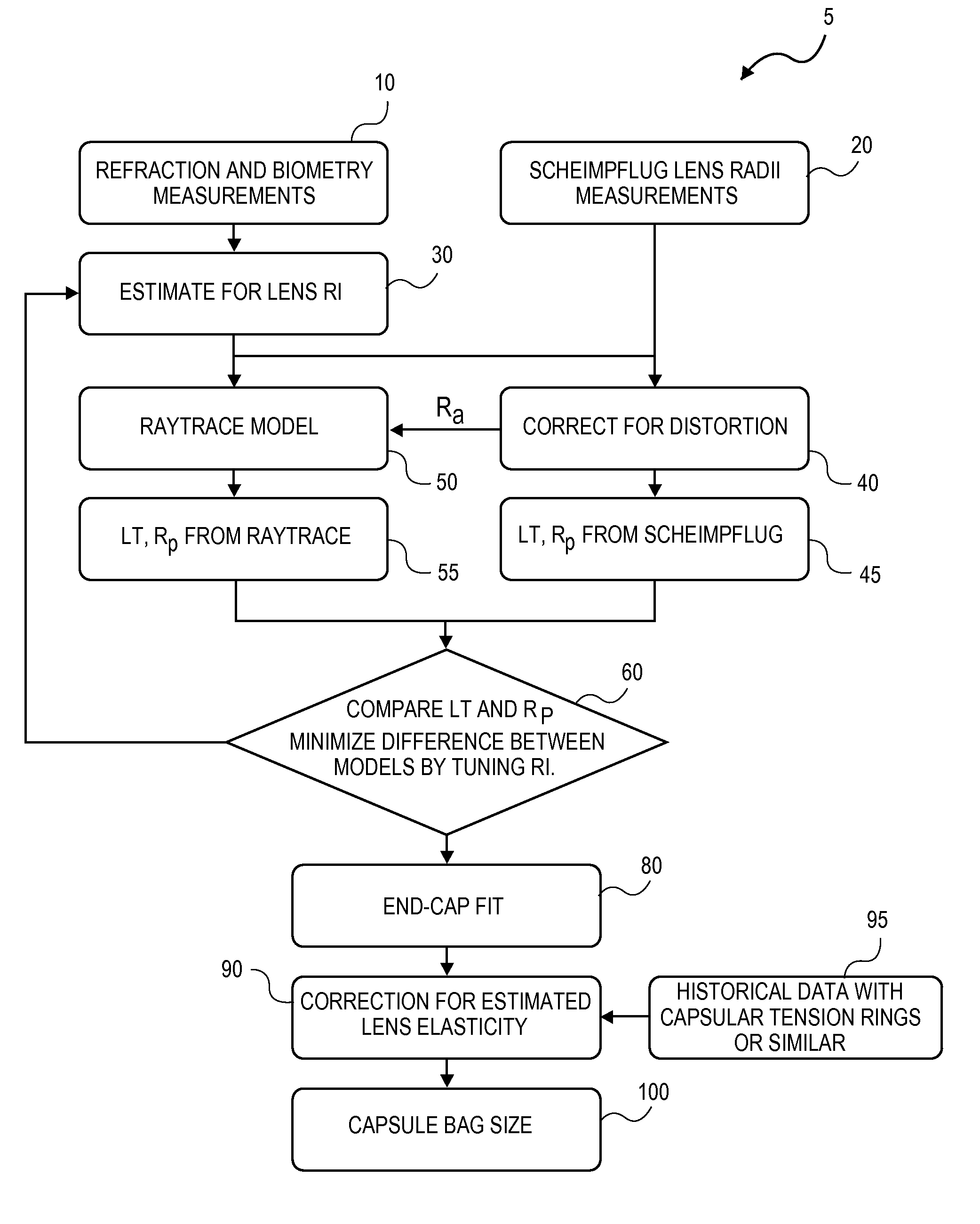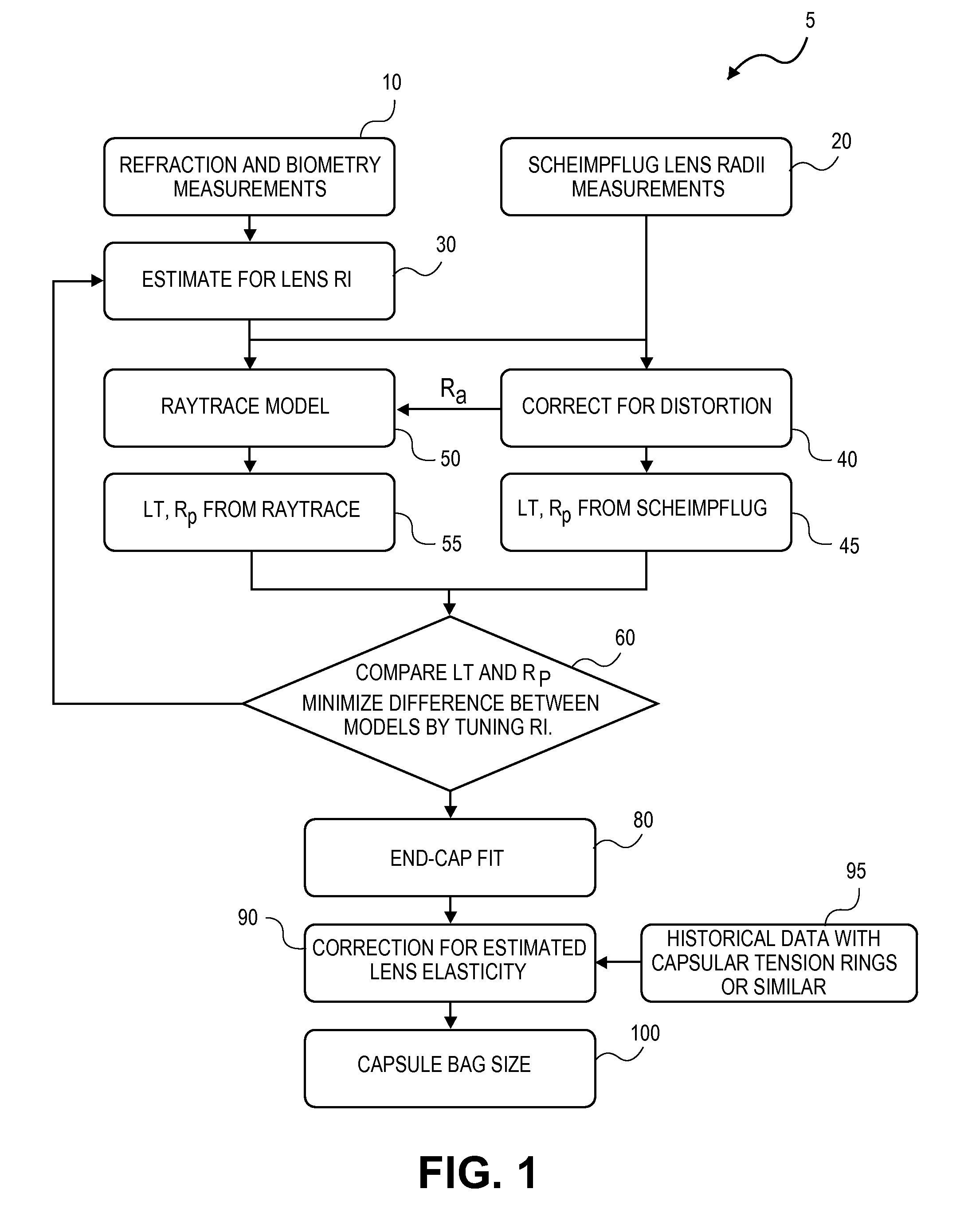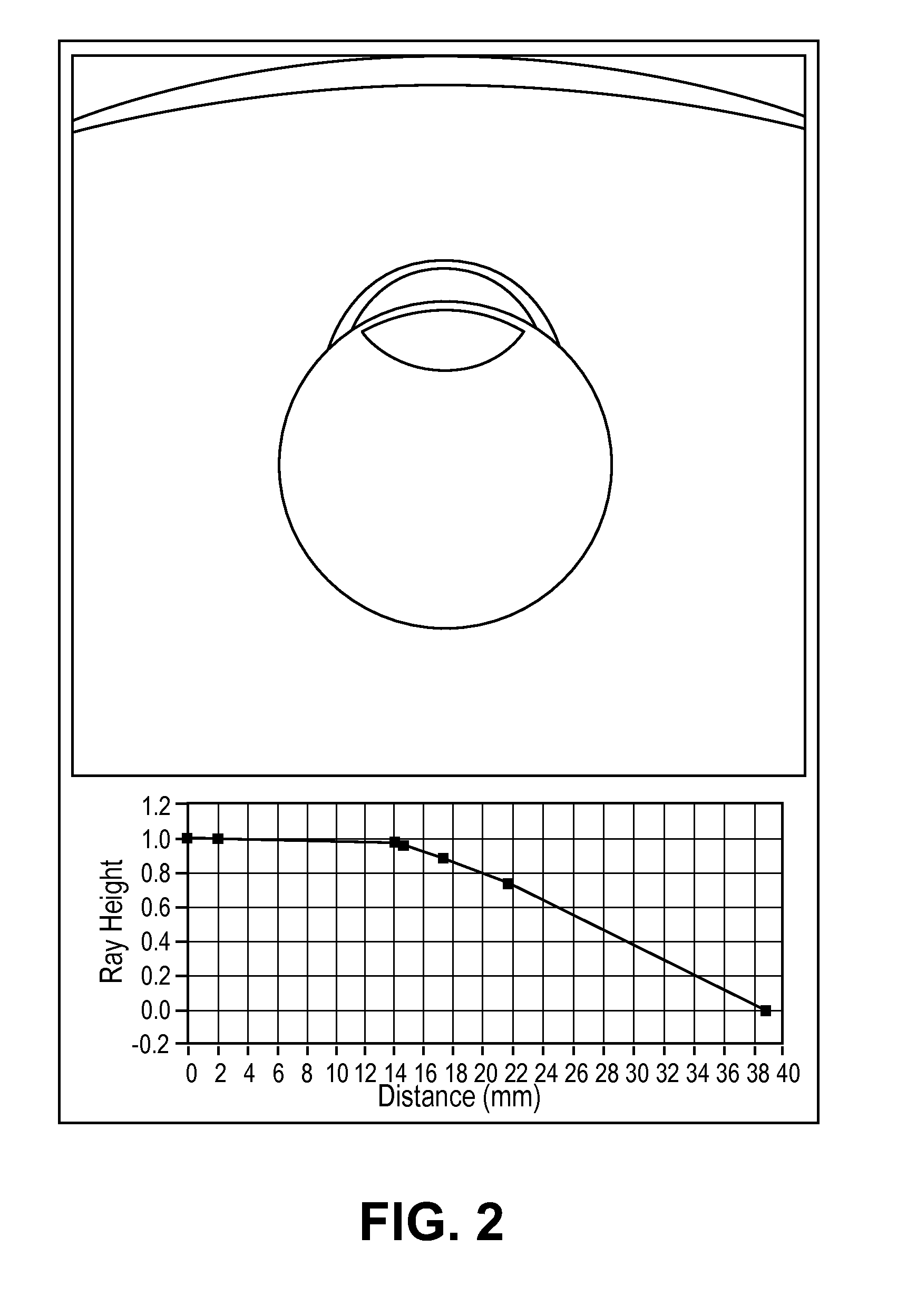Lens capsule size estimation
a technology of lens capsule and equatorial diameter, which is applied in the field of lens capsule size estimation, can solve the problems of long scanning time, increased motion noise, and generally too thick mri slice thickness to get an accurate estimation of the true equatorial diameter of the lens capsul
- Summary
- Abstract
- Description
- Claims
- Application Information
AI Technical Summary
Benefits of technology
Problems solved by technology
Method used
Image
Examples
Embodiment Construction
[0019]The disclosure herein relates generally to methods of estimating the size of a capsular bag in an eye. The methods herein can be used to determine an appropriately-sized IOL to be implanted in a subject following the estimation, but the methods are not limited to this use. As used herein, capsular bag “size” includes, without limitation, any dimension of a capsular bag, a general shape of the bag or portions of the bag, volume, etc.
[0020]The estimation methods described herein can be performed on a capsule bag when the capsule is in a subject (in vivo), on an artificial capsular bag which is part of an artificially created eye, or on a native capsule bag which is part of an eye from a subject (such as an animal) which has been removed from the subject. The methods are performed while the lens is still within the capsule, but in some instances some measurements may be made after the lens has been removed from the capsule.
[0021]FIG. 1 shows an exemplary embodiment of a method of...
PUM
 Login to View More
Login to View More Abstract
Description
Claims
Application Information
 Login to View More
Login to View More - R&D
- Intellectual Property
- Life Sciences
- Materials
- Tech Scout
- Unparalleled Data Quality
- Higher Quality Content
- 60% Fewer Hallucinations
Browse by: Latest US Patents, China's latest patents, Technical Efficacy Thesaurus, Application Domain, Technology Topic, Popular Technical Reports.
© 2025 PatSnap. All rights reserved.Legal|Privacy policy|Modern Slavery Act Transparency Statement|Sitemap|About US| Contact US: help@patsnap.com



